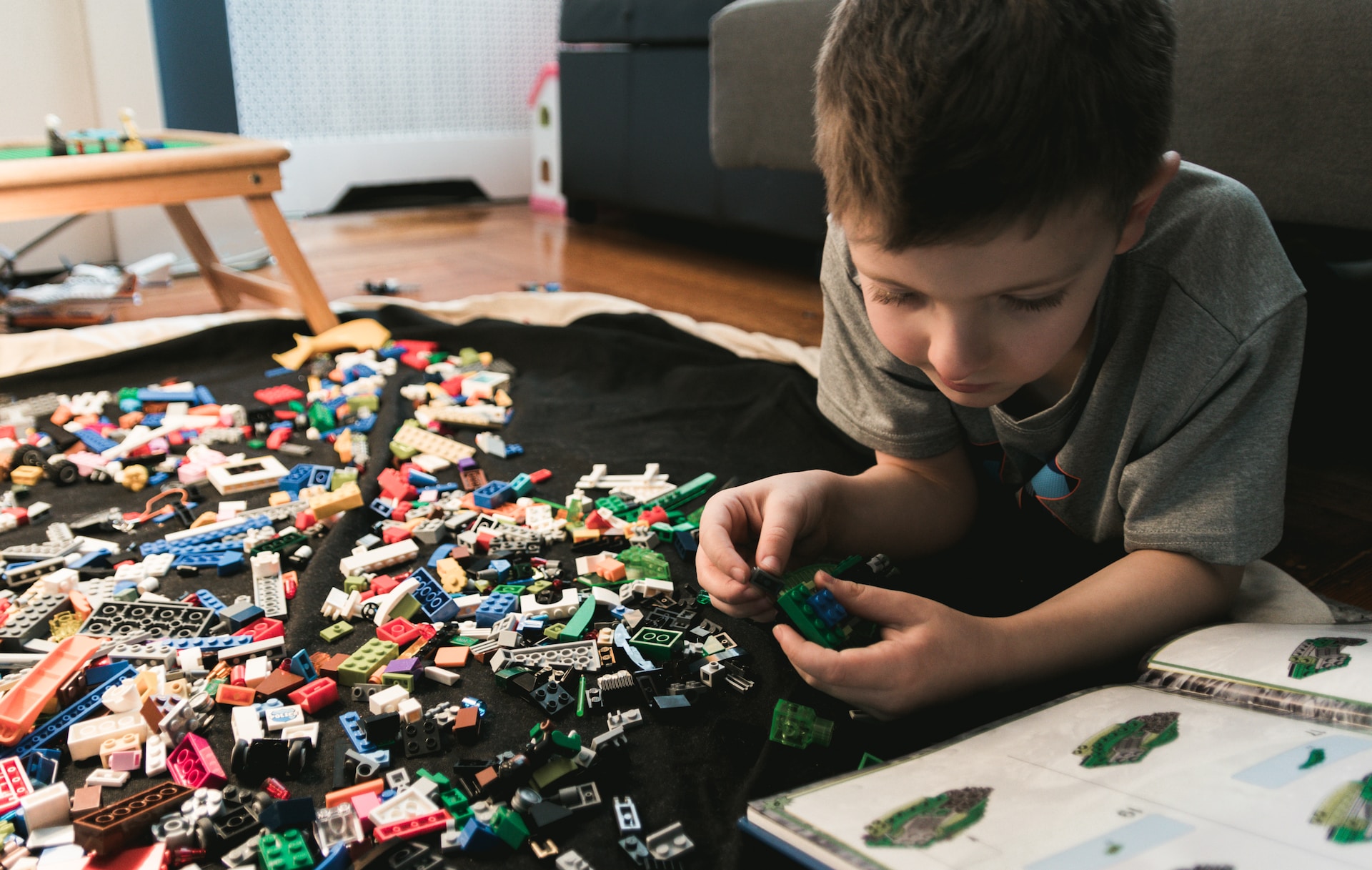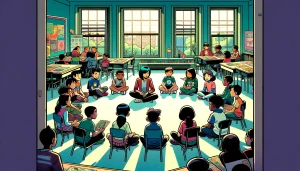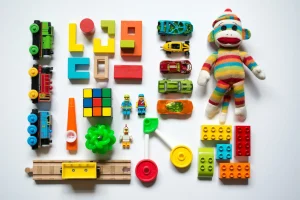Characteristics of STEAM Toy Design

The Significance of STEAM Education in Toys
In a rapidly advancing world driven by science, technology, engineering, arts, and mathematics (STEAM), the importance of STEAM education has taken center stage. This article delves into the profound significance of STEAM education in the realm of toys, shedding light on how these educational tools can shape young minds and prepare them for the challenges of the future.
The Rise of STEAM Education
The 21st century is marked by unprecedented technological advancements and an ever-growing reliance on innovation. To thrive in this landscape, the workforce of tomorrow must possess a diverse skill set that extends beyond traditional boundaries. This is where STEAM education comes into play. It aims to equip students with a holistic understanding of various disciplines, fostering critical thinking, problem-solving abilities, and creativity.
In this context, toys serve as powerful agents of learning. They provide children with opportunities to explore complex concepts in a fun and engaging way. Moreover, these toys have the potential to bridge the gap between formal education and real-world application, making learning a dynamic and interactive experience.
Toys as Educational Tools
Toys have long been recognized as essential tools for cognitive development in children. However, their role has evolved beyond mere entertainment. Today, educational toys are designed with a purpose – to introduce young minds to STEAM principles from an early age.
The Variety of Educational Toys
The market is brimming with an array of educational toys, ranging from building blocks and robotics kits to art supplies and mathematical puzzles. These toys cater to different age groups and learning styles, ensuring that every child can find a toy that resonates with their interests and abilities.
The Need for Educational Value
While the availability of educational toys is impressive, it’s crucial to note that not all toys are created equal. The educational value of a toy should be a top consideration for parents and educators. A well-designed STEAM toy should offer more than just entertainment; it should spark curiosity, encourage exploration, and provide opportunities for hands-on learning.
As we progress through this exploration of STEAM toy design, we will delve deeper into the core principles that make these toys effective tools for education. From scientific integrity to technical design and artistic appeal, each facet plays a vital role in shaping the minds of future innovators and problem solvers.
The Core Principles of STEAM Toy Design
In the world of STEAM toy design, success hinges on a meticulous blend of scientific, technical, engineering, artistic, and mathematical principles. This chapter unravels the core tenets that underpin the creation of these educational gems, shedding light on the multifaceted approach that transforms toys into powerful tools for learning.
Scientific Design in Children’s Educational Toys
A Foundation of Scientific Integrity
STEAM toys must abide by the laws and principles governing the natural world. Scientific integrity is the cornerstone of their design. Toys should not only be entertaining but also scientifically accurate, providing children with a reliable foundation for understanding the world around them.
Age-Appropriate Exploration
To cater to various age groups, STEAM toys must strike a balance between complexity and simplicity. Younger children may engage in basic scientific concepts, while older ones can explore more intricate theories. Age-appropriateness ensures that learning remains enjoyable and comprehensible.
Technical Design Principles in Children’s Educational Toys
The Role of Technology
Technology is a catalyst for interactive and engaging learning experiences. In the realm of STEAM toy design, integrating technology is essential. Whether it’s through interactive apps, augmented reality, or sensors, technology makes complex concepts accessible and enjoyable for children.
Safe and Understandable Integration
Safety is paramount when incorporating technology into educational toys. Designers must ensure that technology integration poses no harm to children and that it enhances the learning process without overwhelming them. The user interface should be intuitive and user-friendly to avoid frustration.
Engineering in Children’s Educational Toy Design
Hands-On Learning
Engineering-focused toys are more than just playthings; they are hands-on learning tools. These toys allow children to explore structural concepts, problem-solve, and build physical models. Through engineering, young minds grasp the foundations of design, mechanics, and problem-solving.
A 2022 study from the University of Mersin emphasized this: “It is thought that using scientific toy design activities based on the engineering design process in science lessons, will support students’ creativity and meaningful learning, and provide motivation”. This shows the significance of engaging practical experience.
Modular Elements
Modularity in toy design offers versatility and adaptability. It allows children to construct, deconstruct, and rebuild, promoting creativity and experimentation. Modular STEAM toys empower children to transform their ideas into tangible creations.
Mathematical Application in Children’s Educational Toy Design
Mathematical Prowess
Mathematics is the backbone of STEAM education. Educational toys can incorporate math through calculations, strategic thinking, and problem-solving activities. These toys encourage children to think critically and apply mathematical concepts in practical scenarios.
Age-Appropriate Challenges
To cater to various age groups, mathematical challenges in STEAM toys should be tiered in complexity. This ensures that children are appropriately challenged, allowing them to develop their mathematical skills progressively.
With a firm grasp of these core principles, designers embark on a journey to create STEAM toys that not only educate but also inspire. The seamless integration of science, technology, engineering, art, and mathematics empowers children to explore, innovate, and build a foundation for lifelong learning.
Integrating STEAM Education into Toy Development
As we venture further into the realm of STEAM toy design, it becomes evident that these educational tools are not mere playthings; they are carefully crafted instruments that hold the potential to shape young minds and prepare them for the challenges of the future. Here are some of the intricacies of integrating STEAM principles into toy development.
The Concept of Integration
The fusion of STEAM principles into toy development is a multifaceted process. It involves weaving these disciplines seamlessly into the fabric of play, creating a holistic learning experience for children. But what does this integration entail?
Versatility Across Age Groups
STEAM toys must cater to a wide range of age groups. From toddlers to teenagers, each developmental stage presents unique opportunities for learning. Designers must consider how to adapt STEAM concepts to align with the cognitive abilities and interests of various age groups.
Compliant with STEAM Education Concepts
To ensure the educational value of these toys, they must align with established STEAM education concepts. Whether it’s following curriculum guidelines or incorporating core principles, toy developers need to remain steadfast in their commitment to educational integrity.
Playability and Fun: The Educational Catalysts
STEAM education should not sacrifice playability and enjoyment. In fact, these attributes are integral to the success of educational toys. Here’s how playability and fun become catalysts for learning:
Engaging and Interactive
STEAM toys should captivate children’s attention and encourage active participation. Whether it’s building a robot, conducting scientific experiments, or creating art, the interactive nature of these toys fosters engagement.
Encouraging Curiosity
The best STEAM toys stimulate curiosity. They inspire children to ask questions, seek answers, and explore the world around them. Curiosity is the driving force behind the development of critical thinking and problem-solving skills.
The Evolution of Educational Play
In the ever-changing landscape of education, the evolution of educational play has been remarkable. This chapter delves into the transformation of playtime from a simple pastime to a powerful vehicle for STEAM education, highlighting the role of STEAM toy design in this journey.
The Shifting Paradigm
Educational play has undergone a profound shift over the years. Gone are the days when toys were solely for amusement. Today, play is recognized as a potent tool for learning and development. This shift is fueled by the recognition of the importance of STEAM education in preparing children for a technology-driven world.
Learning Through Play
Play is now seen as an active form of learning. Children engage with educational toys to explore scientific concepts, tinker with technology, build structures, express themselves artistically, and solve mathematical puzzles. Through play, they develop essential skills that will serve them well throughout their lives.
The STEAM Advantage
STEAM toys occupy a special place in this educational transformation. They are carefully designed to harness the power of play for learning. By integrating STEAM into playtime, these toys empower children to become not just consumers of knowledge but creators and innovators.
The Impact of Technology
Technology has played a pivotal role in shaping the evolution of educational play. The digital age has ushered in a new era of interactive learning, and educational toys have adapted to this technological landscape.
Interactive Learning Experiences
Educational toys are no longer confined to physical objects alone. They now encompass interactive apps, augmented reality, and digital platforms that engage children on multiple levels. This fusion of physical and digital experiences makes learning more dynamic and captivating.
Empowering Through Digital Tools
Digital technology has democratized education. STEAM toys with digital components can provide children with access to a wealth of information, enabling them to explore topics beyond their immediate environment. This digital empowerment fosters curiosity and a thirst for knowledge.
A Bridge Between Formal and Informal Learning
Educational play serves as a bridge between formal classroom learning and informal, self-directed exploration. It complements school curricula by reinforcing concepts in a hands-on, practical manner.
Fostering Problem-Solving Skills
Through play, children develop problem-solving skills by encountering challenges and devising solutions. These skills are transferable to real-world scenarios, preparing them for future endeavors.
The evolution of educational play, driven by the principles of STEAM toy design, has fundamentally altered the way children learn and grow. As we conclude this exploration of the characteristics of STEAM toy design, we are reminded that these educational tools are not just playthings; they are the building blocks of future innovators and problem solvers, shaping the minds of the next generation.
The Artistry of STEAM Toy Design
In the intricate world of STEAM toy design, artistry plays a pivotal role. This chapter unravels the artistic elements that enhance the appeal and effectiveness of educational toys, aligning with the cognitive preferences of young learners.
The Power of Visual Appeal
Captivating Aesthetics
Artistic design in STEAM toys extends beyond mere decoration. It captivates children’s imaginations, drawing them into a world of wonder and exploration. Striking colors, engaging shapes, and visually stimulating features are the building blocks of a toy’s visual appeal.
Emotional Connection
Artistic elements evoke emotions and foster a deep connection between children and their toys. Whether it’s a beautifully designed puzzle or a visually captivating science experiment kit, these elements engage children’s emotions, making learning an enjoyable and memorable experience.
Art and Cognitive Development
Enhancing Creativity
Artistic expression is synonymous with creativity. Educational toys that incorporate art encourage children to express themselves freely. Through drawing, painting, and sculpture, they explore their creative potential, honing their artistic skills and imaginative thinking.
Multisensory Learning
Art engages multiple senses simultaneously. When children create art as part of their STEAM education, they not only see but also touch, hear, and sometimes even taste and smell the materials they work with. This multisensory experience enhances their understanding of abstract concepts.
Artistic Alignment with Age Groups
Tailored Designs
One size does not fit all in the world of STEAM toys. Age-appropriate artistic design is essential. Younger children may benefit from simple, colorful designs, while older ones may require more complex and abstract artistic elements that challenge their growing cognitive abilities.
Storytelling Through Art
Artistic storytelling is a powerful educational tool. STEAM toys that incorporate art can convey narratives that engage children in the learning process. These narratives create a context for learning, making complex concepts more relatable and memorable.
The Collaborative Role of Art
Artistic design in STEAM toys is not an isolated element; it collaborates with other disciplines to create a holistic learning experience. Whether it’s integrating art with scientific experiments, mathematics puzzles, or engineering challenges, this collaboration enhances the overall educational impact.
In the realm of STEAM toy design, artistry is the brushstroke that brings educational concepts to life. It engages children’s senses, fuels their creativity, and forms a bridge between the abstract and the tangible. By aligning artistic design with the cognitive preferences of young learners, educational toys become more than objects; they become vehicles for inspiration and knowledge acquisition.
Nurturing Future Innovators through STEAM Toys
In our exploration of the characteristics of STEAM toy design, we’ve uncovered the multifaceted elements that make these educational tools indispensable. In this chapter, we delve into how STEAM toys play a vital role in nurturing the future innovators of our world.
Fostering a Growth Mindset
Encouraging Exploration
STEAM toys encourage children to approach problems with a growth mindset, where challenges are seen as opportunities for learning and growth. Through hands-on experimentation and problem-solving, they develop the resilience and determination needed for innovation.
Embracing Failure
Innovation often emerges from failure. STEAM toys create a safe space for children to make mistakes, learn from them, and persevere. This resilience is a cornerstone of future success in a rapidly changing world.
Building Critical Thinking Skills
Problem-Solving Prowess
STEAM education emphasizes critical thinking and problem-solving. Educational toys challenge children to think analytically, evaluate information, and devise clever solutions—a skill set vital for future innovators.
Hands-On Learning
STEAM toys offer tangible experiences that help children grasp complex concepts. By manipulating physical objects, they gain a deeper understanding of abstract principles, laying the groundwork for innovative thinking.
Sparking Curiosity and Imagination
Curiosity-Driven Exploration
STEAM toys ignite children’s curiosity, encouraging them to ask questions, seek answers, and explore the world around them. Curious minds are the driving force behind innovation and progress.
Imagination as a Catalyst
Imagination is the spark that ignites innovation. STEAM toys that incorporate creative elements, such as artistic expression and open-ended design, stimulate children’s imaginations, fostering the creativity essential for future innovation.
Promoting Collaborative Learning
Teamwork and Communication
Many STEAM toys are designed for collaborative play. Working together on complex projects teaches children valuable teamwork and communication skills, preparing them for collaborative innovation in the future.
Diverse Perspectives
Collaboration also exposes children to diverse perspectives and approaches. This diversity of thought is a cornerstone of innovation, as it encourages the exploration of new ideas and solutions.
Preparing for a Technology-Driven Future
Digital Literacy
In an increasingly digital world, STEAM toys with technology integration prepare children with essential digital literacy skills. Understanding and manipulating technology are critical for future innovation and career success.
Coding and Robotics
STEAM toys that introduce coding and robotics empower children to interact with and shape the technology that will define their future. These skills are fundamental for innovation in fields like artificial intelligence and automation.
As we conclude this exploration of the characteristics of STEAM toy design, we recognize that these educational tools are more than playthings—they are the seeds of innovation. By nurturing a growth mindset, fostering critical thinking, sparking curiosity and imagination, promoting collaboration, and preparing children for a technology-driven future, STEAM toys lay the foundation for the innovators and problem solvers of tomorrow.
Conclusion: Shaping Tomorrow’s Innovators through STEAM Toy Design
STEAM (Science, Technology, Engineering, Arts, and Mathematics) toys have evolved beyond mere entertainment to become essential educational tools, shaping the next generation of innovators. These toys, seamlessly blending the principles of STEAM, aim to ignite young minds by encouraging critical thinking, creativity, and a growth mindset. They’re designed to be safe, versatile, and most importantly, engaging for kids.
The beauty of STEAM toys lies in their ability to make complex concepts tangible, combining artistic appeal with learning. They foster curiosity, resilience, collaboration, and readiness for a tech-savvy future. More than just playthings, STEAM toys are the building blocks for future thinkers, doers, and leaders, preparing them to both comprehend and influence the world.












